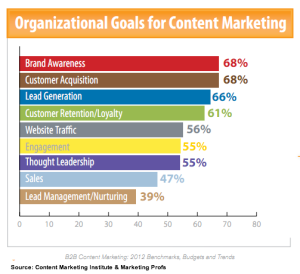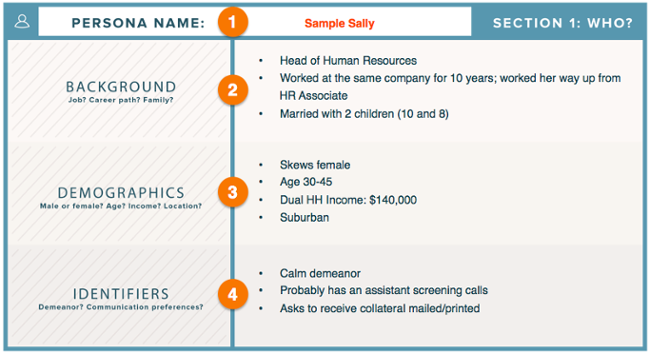Last updated on November 24th, 2022
Building a content strategy is just as important as having an online presence. As a marketer, if your strategy is right, you will be on track to achieve your traffic goals.
So, do you have an action plan in place?
Which methods and strategies do you plan to employ for a good amount of organic traffic to come your way?
Without clear answers to these, you will only be going around in circles, ultimately feeling lost. A lack of strategy creates a disparity between what is intended and what the final outcome happens to be. This may be detrimental to your brand’s credibility and leave your target audience confused!
But, here’s the deal.
There is no tailor-made formula for creating a content strategy. You need to figure out what works for your business.
Keep in mind that your content strategy must be flexible with enough room to modify it so that it suits the ever-dynamic needs.
So, fasten your seat belts as we get started on helping you chalk out your content strategy framework.
Before that, a look at the first things first to get you warmed up…
What is a Content Strategy?
A content strategy is a part of your overall marketing plan, precisely called as content marketing. It is the management of just any kind of media you own or create, whether visual, audio, written, or downloadable.
There’s quite an obvious line of difference between content strategy and content marketing strategy. The former is a component of the latter. While a content creation strategy is about identifying what, when, and how to create content, content marketing is about strategizing all of these plus distribution and analytics.
Content strategy takes a bird’s eye view of pretty much all the content your customers will come across. It needs to start with a vision of why, what, and how your content will be created, fine-tuned, managed, updated, and archived.
Envisioning an actionable content strategy is essential for guiding your future content development efforts so that the results are in tune with your business objective. We are not talking about generic content here. If content is generic, it isn’t engaging enough and will probably not even get shared on social media channels.
So much about what a content strategy is and why it is important to devise. So, how can you build a content strategy? What are the best ways of distributing your content?
You need to understand the key elements of a content strategy first.
Essential Elements of the Content Strategy Document
When you create your content strategy document, you are actually building a framework that will serve as the foundation of a fool-proof content marketing plan to get you started. Make sure you keep it short and simple but only after brainstorming all critical ingredients.
Take a look at these vital elements of a content strategy document.
Goals
Goal clarity is critical to producing content that will deliver favourable results for your business. Having a clear idea of the goals will help you understand the core issues you want your content to address.
Are you trying to boost your sales?
Do you want to enhance customer support?
Are you looking to entice new visitors or trying to move leads down the sales funnel?
Does your audience need to be educated to be able to understand your product/service better?
Goals may be one or more of these, or in some circumstances, even a combination of a few. They have a clear impact on each facet of your content production cycle. Establish tangible goals which can measure the performance of your content and ROI.

Buyer Persona
Fluff doesn’t work anymore on search engines. Period.
You write pages and pages of content, but if they don’t make sense to your target audience, they will ultimately get trashed.
The idea is to connect with your audience and write for humans, not search engines.
Identify whom you are creating the content for to be able to align it to the audience needs. The content needs to be what your target audience will love to know. Figuring out your targeted traffic is important.
When you are creating a buyer persona, delve deeper into the demographics and psychographics to understand customer behaviour.
Seek answers to questions such as:
What kind of people do you think should be reading your content?
Who are your buyers most likely to be? Men, women or kids?
What is the age bracket?
What does your customer/audience want?
What are their likes and dislikes?
What channels of communication or social media do they prefer the most?
Here’s a look at a generic template you can use for creating a buyer persona.
- Background (basic work details of the persona, where is he working or suitable info on hobbies or education, job title).
- Demographics (gender, age, income, urban or not).
- Identifiers (Buzz words and mannerisms).

Remember to update the buyer personas from time to time for optimum results in the form of a boost in organic traffic to your website.
Type of Content
Different types of content serve different purposes. When your aim is to generate new traffic, your content focus should be on infographics, checklists, and top of the funnel posts. Ebooks are a great way to help the targeted audience go a step further in their journey.
Consider finding answers to the following questions to help your content team align their writing to your goals.
How technical should your content be?
What should be the preferred tone?
Should the content be educative in terms of the industry best practices to follow? (Already tried and tested approaches)
Should it be a summary of what you have been doing right and a framework of the same? (Innovative ideas that can change the game)
Frequency of Content Delivery
When your business goals are in place, you will have better clarity on the content you want to publish. Next, you need to arrive at the frequency of posts. This is important from the SEO and content visibility point of view.
It is essential to have a consistency in creating content. The frequency of content creation will depend on your business goals. If branding is the goal, a lesser frequency works, but Search Engine Optimisation necessitates a high frequency.
Also, you must use analytics to assess what kind of content is favoured by your audience and arrive at the frequency of posts. Space out the posts as per category to ensure content for one category does not overlap.
Figure Out the Topics Based on Your Offerings
When you have figured out how often you are going to post content on one category, you need to know what your writers will be writing on. Identify keywords that are the best fit for your business and put them on Google to see which topics come up in the search results.
Think out of the box and arrive at topics that will interest your target audience. Introduce them to your business so that they don’t appear to be a misfit on your website.
Identify Who Will Create the Content
Ask yourself the following questions.
Do you have writers in-house to create content with a reader-friendly tone?
Will hiring content expert freelancers work better on your budget?
After you have identified who will handle the task of creating content, it’s time to get the ball rolling.
Content Calendar
Preparing a content calendar is an integral part of any content strategy if you want to materialise your goals. This calendar will have all topics, keywords, target audience, timelines, and author names in one place.
The editorial calendar chalks out what you will publish and when, specifying the particular days of the week against each topic. You may intend to roll out multiple content pieces on the same day if each of them targets a different audience.
It’s critical to manage the publishing schedule well as promotion and the distribution of content will depend on it. Create a weekly or monthly schedule and share it with the concerned teams.

Crafting Your Traffic Acquisition Strategy
The competition to get noticed on the web is beyond comprehension. Getting your target audience to your website is the key for augmenting conversions.
In these years of experience, I have come to infer that there are three main elements that drive traffic to your website. Consider one of them based on your business and goals.
Here’s a look at these elements that aim at driving traffic to a website.
- Post shareable content or resources (B2B)
B2B organisations sell to other companies and not to consumers. It may look like they do not invest time and money in inbound marketing but that is far from reality. It works for B2B businesses to create resources, case studies, and research papers as a means of increasing traffic.
Deals between one B2B business and another happens on the basis of credibility. If structured and created with valuable information for the reader, resources convey your expertise in the field. Likewise, case studies validate your experience and tell the other company that you are adept at providing the services to them.
It’s not new that when content is shared across reliable platforms, your credibility gets a boost. You need to use this to your advantage and drive traffic to your website.
If you can get your visitors to share your content regularly or in a considerably large volume, it will give you access to tons of traffic. This will also increase your chances of ranking higher in the Google searches.
Expert guides, eBooks, research papers, and white papers are excellent examples of shareable resources. Expert guides make for great sources of learning. If a business advocating your brand shares it on his network and links it to their content, it can provide indirect benefits to your brand.
A good eBook or a white paper can be excellent tools for drawing visitor attention and converting customers, typically when it comes to B2B customers.
White papers focus on a company’s products and services. They are known to generate qualified leads and are useful to visitors who are interested in your offerings and most likely to convert. EBooks concentrate on providing general industry knowledge.
Pick vital information from the white papers and eBooks to create eye-catching infographics that are designed to convey your message faster. Infographics are useful for those who do not have much time to read elaborate content.
- Organic Traffic
Writing SEO focused content and blogs for B2B and B2C consumption are excellent for bringing organic traffic to your website. If your content complies with SEO and provides resolution to user queries (that they input on search engines), it is certainly a sure shot way to get traffic to your website.
Internet users today are smarter than ever before. They prefer to run a quick search before making any buying decision whether to gain more information or to find the best deal on a product/service.
They ignore advertisements and are impressed by quality content scores on all these points – readability, easy to understand, and high on content value. If your content takes care of all of these, it’s only a matter of time when you will get organic traffic with high ROI.
Getting your website to list in the first few positions of the SERPs is indicative of the success of your SEO efforts. This will depend on how optimised your website is for the search engines.
Focus on getting your website structure, keywords, and blog posts right to gain leverage on search engines.
- Traffic Through Social Media
Social media marketing has had a tremendous impact on the way businesses make their presence felt to among their target audience. Created originally for communication purposes, today social networking sites are used extensively for business and marketing. Primarily, B2C companies were the first to take the plunge as this type of marketing allowed them to directly validate their performance.
Ok, here are some interesting snippets of how social media marketing impacts a business’ content strategy.
As per the statistics given by Excellent Presence, did you know…
90% of all social media users use Facebook?
As has been the trend from the past, women (77%) are more likely to use Facebook than men (66%).
Approximately 70% of Facebook users spend time on the social platform everyday and 45% use it many times a day.
People like to scan on Facebook. Short writing draws more eyeballs and better responses.
Thursdays and Fridays are the best days to post on Facebook for maximum engagement.
MIT finds that company CEOs using Twitter extensively for business-related tweeting have more RTs, faves and more followers.
Using images on Twitter generates 5 to 9 times more retweets and 4 to 12 times more favorites.
Tweets with 120 to 130 characters and hashtags are more engaging.
An infographic on a social media channel is 30x more likely to be read than a plain looking text post.
Content marketing generates 3x as many leads as traditional marketing and costs 62% less.
60% buyers show interest in buying a product after reading content about it.
A study of 220,000 pieces of content indicate that ‘list’ and ‘why’ articles are the top two most shared types of content.
Phew! So much for the stats.
Social media is growing at an astounding pace and user behaviour has witnessed a sea change over the years. Gone are the days of click baits when users could be lured into clicking your link and building traffic.
Update your Existing Blogs
Publishing meaningful content in the form of blogs can work wonders in creating healthy brand awareness. However, we live in a fast-growing world, and it becomes equally important to revamp your content and keep it updated regularly.
Leveraging your existing content by modifying and refreshing it is one of the best strategies. This way, you do not have to go through the process of writing a new blog.
The first step would be to update information that has changed since the time it was published. Facts and statistics that held good before might not hold good with the current market scenario.
The next thing on the checklist would be to remove redundant information that does not add any value to the reader in today’s scenario. Also, this is the step where you add content that adheres to the current market trends.
Your existing blogs are a source of information too. Has your target audience liked the content that you had posted? How well has it worked? Do you have feedback to make it better? Do you have new products that are a better solution?
Answer the above questions and include them while you are updating your existing blogs. Give your audience what they need, and you will get what you need.
Continuously updating your content shows the people on the internet that you are constantly growing along with the growing market. That is a positive trait to showcase and will significantly enhance your brand awareness.
Power of Non-Textual Content
While blogs are one of the most widely distributed types of content, many other types are gaining popularity among different target sectors.
Visual Content
- Visual information can be processed significantly faster than any other type of content. Visual content in the form of infographics and social media posts will help you reach a larger set of audience. Nothing is more encapsulating than a good story, and videos are the best format to tell the world a beautiful story.
Today, marketers in the B2C domain have to think out of the box all the time and keep innovating to get their website/products/services noticed. Visual content is the order of the day. Visuals leave a lasting impression on the minds of users and they retain it for much longer than any other form of communication.
Random videos do not work; they should have a strong message or a story to bring out the utility of a product or service clearly in a serious or funny way. When users on social media channels hear taglines and catchy words in videos, it stays on their mind and they can recollect it even weeks later.
Podcasts
- The average number of podcast listeners are growing every day. It is a great space to offer knowledge to your target audience. A podcast is a good way to talk about your product which is related to the topic and can help make their lives better in one way or more.
Conclusion
Now that you know what are the critical elements in B2B or B2C content strategy, it’s time to spring to action and do the right things to get noticed. Having a predetermined frequency of posts, such as videos, infographics, blogs, white papers, and/or research papers works best. Make sure you have an editorial calendar in place to get you organised.
You may have the know-how of churning out the best content, but posting it in the right place and at the right time is the key. If you learn to do that right, it is only a matter of time before you start seeing results.









